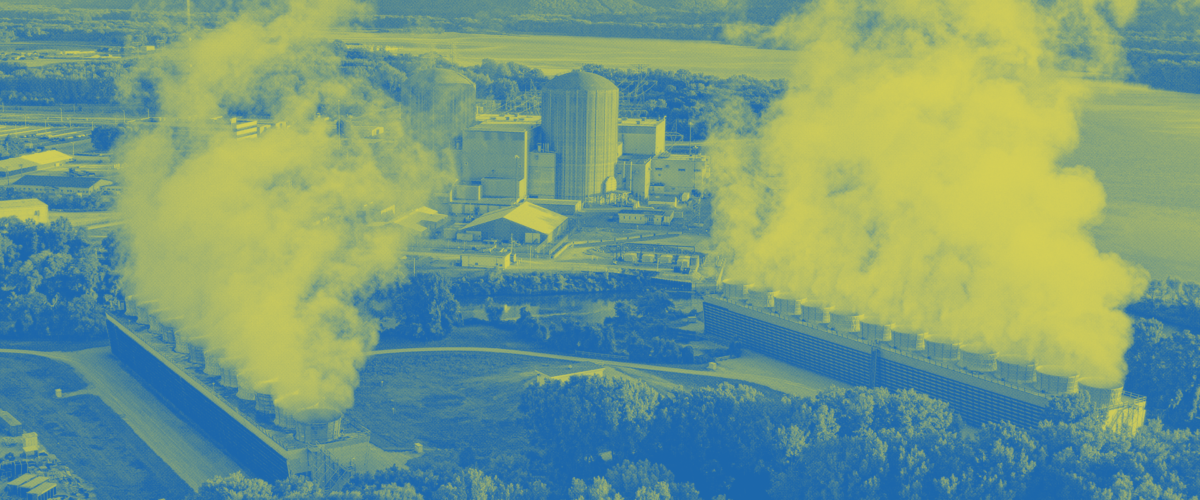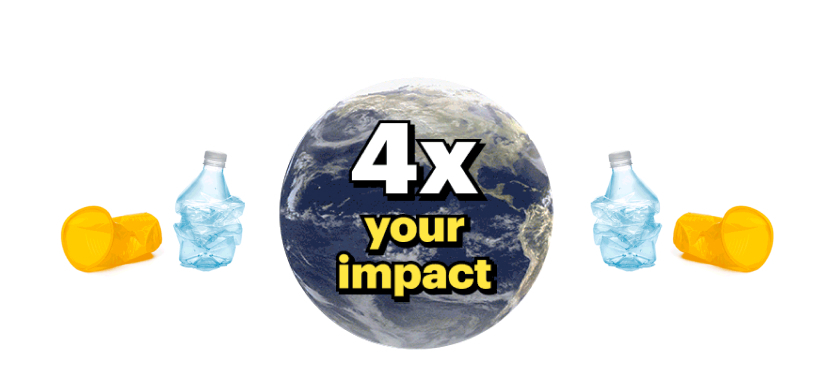Direct Air Capture: 5 Things You Need to Know About This Climate Scam
Published Jan 19, 2023

Direct air capture promises to suck carbon from the sky. But its proponents — including Big Oil — are hiding some dirty downsides. Here are five.
We know that the window is quickly closing for us to slash emissions and avoid climate change’s worst effects. So it’s easy to get excited about direct air capture: technology designed to suck carbon dioxide straight from the atmosphere.
But oil and gas companies have vested interests in DAC. As a kind of carbon capture and sequestration technology, DAC projects will receive hefty federal tax credits.
Now, DAC boosters are drumming up hype that masks real problems — notably, that direct air capture is a scam that won’t help solve the climate crisis. With time running out on climate change, we can’t waste resources on this dangerous and speculative technology. Here are five reasons why.
1. DAC Wastes Tons of Cash on a Few Drops in the Bucket
In August, oil giant Occidental proposed a new direct air capture facility in Texas. The facility stands to become the largest DAC facility in the world — at the cost of $811 million. But even as the world’s largest, Occidental’s facility would, at most, capture just .01% of our country’s annual CO2 emissions.
As this project highlights, we’re not getting much bang for our buck with DAC. Capturing just a quarter of our country’s annual emissions would cost at least $700 billion each year. That includes the hefty bill we’ll receive as taxpayers. Under the current system of tax credits, capturing that quarter will cost us more than $153 billion.
All that cash would be better spent on clean energy. A renewable energy transition would be far more efficient and cost-effective. Our research finds that investing in solar and wind to reduce emissions would be fifteen times cheaper than using DAC to suck them from the sky.
2. DAC Emits More Than It Captures
Direct air capture uses a lot of power. Let’s say the U.S. transferred all the electricity it currently generates to DAC. We would still only capture a quarter of our annual emissions.
The technology’s high energy needs could lead to a lot of climate pollution — more than it can remove. Our research finds that capturing 1 ton of CO2 with fossil-powered DAC would emit the equivalent of 3.5 tons of CO2.
Some proponents argue that using renewables to power DAC would solve this problem. Sure, that might be better than using fossil fuels — but it would be far worse for the climate than just transitioning the grid to renewables.
Using renewables for DAC would require a huge buildout with very little benefit. And it would pull renewable energy from more important and efficient uses, like transport and household power.
3. Carbon Capture Relies on Toxic Solvents
Direct air capture not only threatens the climate — it threatens our public health and safety, too. That’s because the most “promising” carbon capture technologies rely on two kinds of toxic solvents.
The first, aqueous hydroxide solutions, produce deadly and corrosive chlorine gas, which has been used as a chemical weapon. Scaling DAC would produce vastly more chlorine gas than we currently use, raising questions about whether it could be disposed of safely. Capturing just a quarter of U.S. annual CO2 emissions would produce triple the amount of chlorine gas that we use globally.
The second, amine-modified solutions, release chemical carcinogens during DAC that harm human health, even at very low levels. DAC releases one kind of amine-modified solution at a rate that exceeds toxicity limits for drinking water and aquatic ecosystems.
The truth is, DAC comes with some nasty side effects — and we don’t have any sustainable or economical solutions to dispose of all these toxic chemicals.
4. “Long-Term Storage Solutions” are Super Risky
The highlight of carbon capture is the sequestration part: burying the carbon deep underground, where it will (supposedly) never again see the light of day. But even getting the carbon down there is a dangerous game, with lots of risks — notably, the risk for leaks.
Leakage may arise from the mere injection of carbon into storage wells, which can fracture the well’s protective layers. Injection may also cause leaks by causing earthquakes (which also threaten the safety of nearby communities). Additionally, as CO2 is often stored in or around oil and gas wells, the original well bores can create pathways for leaks.
Ultimately, there’s no guarantee that “sequestered” carbon actually stays sequestered. The process faces leaks at every turn. So why is the U.S. spending so much money on such a doubtful bet, when the stakes for lowering emissions are so high? For one:
5. DAC Projects Subsidize and Power More Drilling
While proponents proclaim DAC will pull our emissions out of the sky, they ignore a key fact: currently, 95% of our country’s captured carbon goes to enhanced oil recovery. This process injects CO2 and other chemicals into wells, to flush out the last dregs of oil.
That’s right; the vast majority of captured carbon goes to extracting — and ultimately burning — more oil, resulting in more emissions. In fact, one ton of CO2 used in enhanced oil recovery will lead to 1.2 tons of CO2 emissions when that oil is burned.
Right now, direct air capture isn’t a climate solution — it’s a climate wrecker. What’s more, its greenwashing claims allow fossil fuel giants to continue drilling, fracking, and polluting — subsidized with even more taxpayer dollars. It may even net them more oil, through enhanced oil recovery.
We don’t need expensive, dangerous technology that doubles as a boon for Big Oil. Funding for a complete transition to renewables would be far more effective and efficient, and more people- and planet-friendly.
We need real climate solutions, not Big Oil’s boondoggles. Tell President Biden to reject all carbon capture schemes!

Time to face it —~it’s people or plastics.~We can’t have both.
Become a plastic pollution fighter this Earth~ Day and have your gift MATCHED $3-to-$1!
Enjoyed this article?
Sign up for updates.
TO TOP


